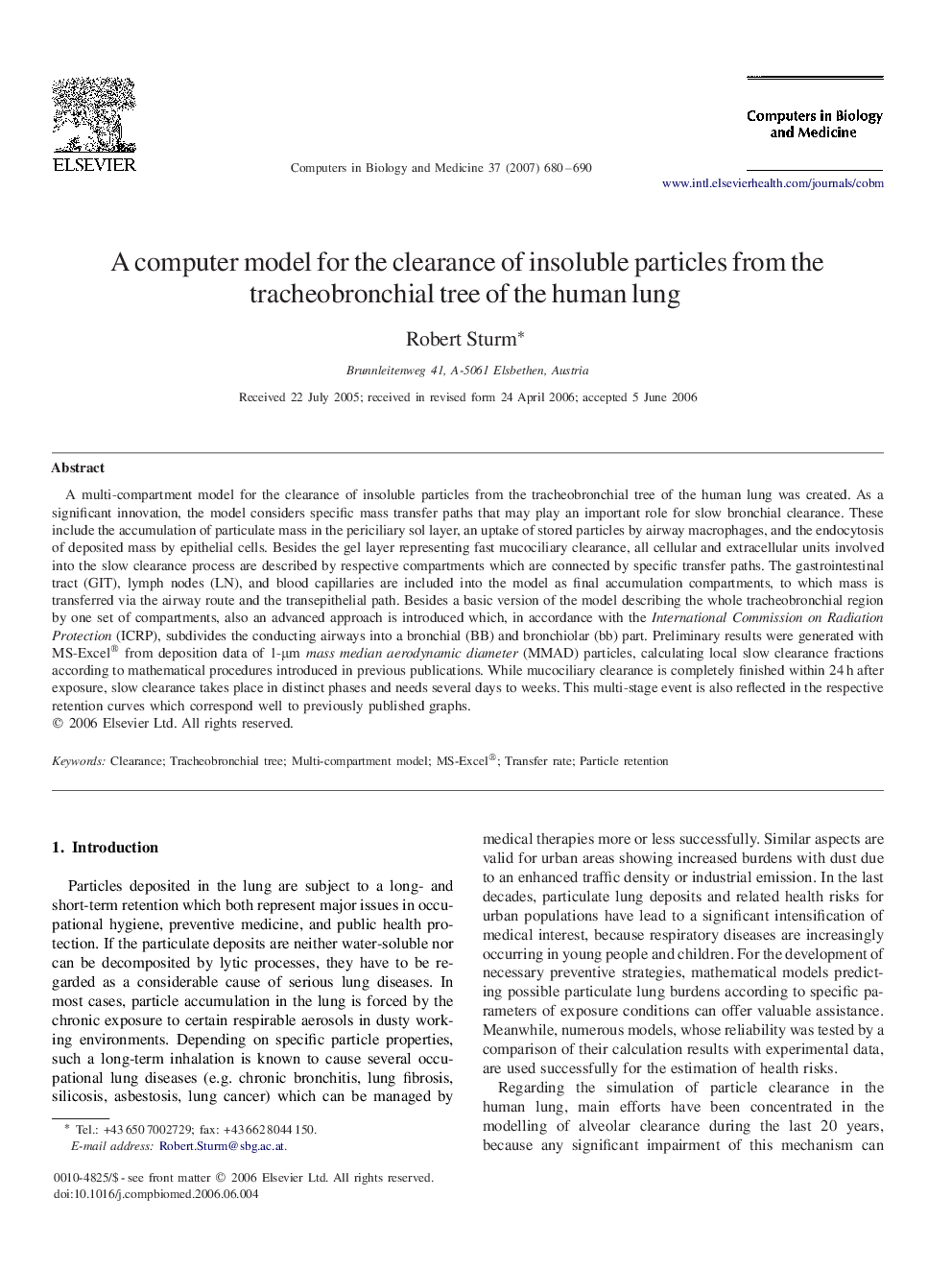| کد مقاله | کد نشریه | سال انتشار | مقاله انگلیسی | نسخه تمام متن |
|---|---|---|---|---|
| 506100 | 864560 | 2007 | 11 صفحه PDF | دانلود رایگان |

A multi-compartment model for the clearance of insoluble particles from the tracheobronchial tree of the human lung was created. As a significant innovation, the model considers specific mass transfer paths that may play an important role for slow bronchial clearance. These include the accumulation of particulate mass in the periciliary sol layer, an uptake of stored particles by airway macrophages, and the endocytosis of deposited mass by epithelial cells. Besides the gel layer representing fast mucociliary clearance, all cellular and extracellular units involved into the slow clearance process are described by respective compartments which are connected by specific transfer paths. The gastrointestinal tract (GIT), lymph nodes (LN), and blood capillaries are included into the model as final accumulation compartments, to which mass is transferred via the airway route and the transepithelial path. Besides a basic version of the model describing the whole tracheobronchial region by one set of compartments, also an advanced approach is introduced which, in accordance with the International Commission on Radiation Protection (ICRP), subdivides the conducting airways into a bronchial (BB) and bronchiolar (bb) part. Preliminary results were generated with MS-Excel®Excel® from deposition data of 1-μm1-μmmass median aerodynamic diameter (MMAD) particles, calculating local slow clearance fractions according to mathematical procedures introduced in previous publications. While mucociliary clearance is completely finished within 24 h after exposure, slow clearance takes place in distinct phases and needs several days to weeks. This multi-stage event is also reflected in the respective retention curves which correspond well to previously published graphs.
Journal: Computers in Biology and Medicine - Volume 37, Issue 5, May 2007, Pages 680–690